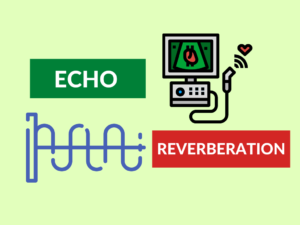Engaging 50 word intro to hook the reader to continue reading until the end of this article
Phonemic awareness and phonological awareness are crucial skills in reading and language development. While these terms are often used interchangeably, they have distinct differences. In this article, we will explore what phonemic awareness and phonological awareness are, provide examples, discuss their uses, and highlight the key differences between them.
What is/are phonemic awareness?
Phonemic awareness refers to the ability to identify and manipulate individual sounds (phonemes) in spoken words. It involves understanding that words are made up of distinct sounds and being able to segment, blend, delete, or substitute phonemes. Phonemic awareness is a foundational skill for reading and spelling.
Examples of phonemic awareness:
- Identifying the initial sound in the word “cat”
- Segmenting the word “sun” into its individual sounds: /s/ /u/ /n/
- Blending the sounds /b/ /i/ /g/ to form the word “big”
- Deleting the /t/ sound from the word “stop” to make “sop”
- Substituting the /m/ sound in “mat” with /r/ to create “rat”
Uses of phonemic awareness:
Phonemic awareness helps children with reading and spelling by enabling them to decode words and understand the alphabetic principle. It also supports vocabulary development, as recognizing individual sounds helps in word recognition and building word meanings. Additionally, phonemic awareness helps children become better at phonics, phonological processing, and language development.
What is/are phonological awareness?
Phonological awareness is a broader term that encompasses various skills related to understanding and manipulating the sound structures of language. It involves identifying, manipulating, and playing with larger units of sound, including syllables, rhymes, and words. Phonological awareness is essential for early literacy development.
Examples of phonological awareness:
- Counting the number of syllables in the word “apple”
- Recognizing that “cat” and “hat” rhyme
- Identifying the odd word out in a set of words based on their beginning sounds
- Breaking a compound word like “football” into its two component words
- Segmenting a sentence into individual words: “I like to play.”
Uses of phonological awareness:
Phonological awareness is crucial in learning to read and write. It helps children develop word recognition skills, improve reading fluency, and enhance spelling capabilities. It is also associated with vocabulary growth, understanding syntax and grammar, and supporting overall language development.
Differences Table
| Difference Area | Phonemic Awareness | Phonological Awareness |
|---|---|---|
| Definition | Focuses on individual phonemes in spoken words | Involves broader skills related to sound structures of language |
| Skills Involved | Segmenting, blending, deleting, and substituting phonemes | Identifying syllables, rhymes, and larger units of sound |
| Scope | Narrower focus on specific sounds within words | Broader focus on overall sound structures and patterns |
| Application | Primarily aids reading and spelling | Supports various language and literacy skills |
| Implementation | Requires explicit instruction and practice | Develops through exposure and experience with language |
| Development | Usually develops after phonological awareness | Serves as a foundation for phonemic awareness |
| Complexity | Focuses on individual sounds that make up words | Involves analyzing and manipulating larger units of sound |
| Transcription | Directly related to sounds, not written letters | May involve connections between sounds and written letters |
| Reading Skills | Helps with decoding, phonics, and word recognition | Aids in sight word recognition and reading fluency |
| Language Skills | Supports vocabulary development and phonological processing | Enhances syntax, grammar, and overall language abilities |
Conclusion:
In summary, phonemic awareness and phonological awareness are both important skills in language and literacy development. While phonemic awareness focuses on individual phonemes in spoken words, phonological awareness encompasses various sound structures and units. Phonemic awareness is essential for decoding and spelling, while phonological awareness supports a broader range of language skills. Understanding these differences can help educators and parents provide targeted instruction to support children’s reading and overall language development.
People Also Ask:
Q: What is the difference between phonemic awareness and phonological awareness?
A: Phonemic awareness refers to the ability to identify and manipulate individual sounds in words, while phonological awareness encompasses a broader range of skills related to understanding and manipulating the sound structures of language.
Q: How are phonemic awareness and phonological awareness related?
A: Phonemic awareness is a subset of phonological awareness. Phonological awareness develops before phonemic awareness and serves as a foundation for the acquisition of phonemic awareness skills.
Q: Are phonemic awareness and phonics the same thing?
A: No, they are not the same. Phonemic awareness is focused on the understanding and manipulation of individual sounds in spoken words, while phonics involves the connections between sounds and the written letters or graphemes.
Q: Can phonological awareness be improved?
A: Yes, phonological awareness skills can be developed and improved through various activities and instruction. Regular exposure to spoken language, rhyming games, and explicit teaching of phonological awareness skills can enhance a child’s phonological awareness abilities.
Q: How can phonemic awareness be assessed?
A: Phonemic awareness can be assessed using various tasks and assessments that measure a child’s ability to identify, segment, blend, delete, or substitute phonemes in spoken words. These assessments provide insights into a child’s phonemic awareness skills and help identify areas for improvement.


